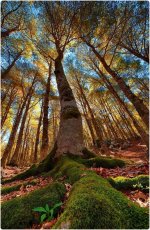Wood
Chumono
There are lots of shows that need to raise the level of the tables
On the topic of dredging up old threads on this subject:
Have heard this for a long time now and I do see the merit of it in the most basic sense, however I have a TON of specimen where it simply seems it'd look silly...maybe the rule is more for coniferous stuff and I'm improperly extrapolating to deciduous broadleafs! In any case I'm eager to hear thoughts on the whole "tilted towards the viewer" idea, I mean even in a 'perfect formal style' I'd feel you'd want it to be truly vertical / not sloped at all (and then there's so many trees like mine where their nebari basically determines the angle, ie tilting forward is at the...
- SU2
- Replies: 381
- Forum: Advanced topics



